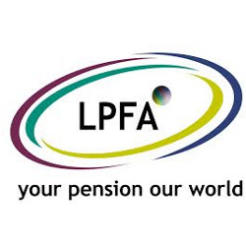Pension contributions have more than doubled to around a third of pensionable salaries for some charities with employees in the local authority pension scheme for London.
The London Pension Fund Authority, which runs the London local government pension scheme, has written to employers, including charities, informing them that from now on their payment levels will be based on a new set of criteria meant to reflect their debt and risk of default more accurately.
And Mike Allen, director of pensions at the LPFA says he believes other local authority schemes have either made similar changes or are likely to do so.
Organisations are likely to see their contributions rise if their schemes are closed to new members, if they are without tax-raising powers, and if they have few assets which they can use as a guarantee, according to documents published by the LPFA.
Most charities in local authority schemes fall into all these categories and are likely to see substantial increases in their bills.
One charity in London has been told its contributions will rise from 18 per cent of pensionable payroll to 33 per cent plus a fixed contribution. Others are believed to be facing similar rises.
Schemes face large deficits
Local government pension schemes exist primarily to provide defined benefit pensions for local authority employees. However many other organisations have become members of these schemes either because they have taken on council staff, or because they have applied to join.
Most organisations in a scheme will be in deficit because the schemes offer generous benefits - typically a proportion of an employee's final salary - but have historically been underfunded due to optimistic estimates about life expectancy and investment performance.
As a result charities which have joined these schemes are often asked to make large contributions.
A pension deficit can be calculated using several different assumptions. The deficit reported in a charity’s accounts is calculated on a “continuance” basis, which assumes the charity still has members in the scheme who have not retired. However if the charity leaves the scheme, or its last employee in the scheme retires, its debt is calculated on a “cessation” basis, which is usually substantially larger.
Because charities will eventually have to leave when the last employee in the scheme retires, they will eventually be forced to meet the larger deficit figure.
Some charities in the LPFA have deficits of more than 33 per cent on a continuance basis, according to their annual accounts. These debts are worth tens of millions of pounds, and are more than 70 per cent of some charities' income.
However the debts could grow to several times this size on a cessation basis.
"Targeting cessation debt"
Allen said that several charities were “only 50 per cent funded on a cessation basis” – a figure which could leave charities owing up to twice their annual turnover to their pensions scheme.
He said because it was inevitable that a charity would have to leave the scheme, it made sense to base their existing contributions on their withdrawal debt.
“We’re targeting the cessation debt,” he says. “We’re looking at when the last member is likely to retire, and trying to manage that by increasing contributions in the interim.
“However we have a conflicting aim, which is ensuring affordability of contributions. We don’t want to set contributions at a level which means the employer is no longer viable.”
He said that the scheme has a large number of organisations with charitable status, but most of these are housing associations, schools and universities. Only a small number, he says, are “what you’d traditionally call voluntary sector organisations”.
Charities still with active members of the scheme include the Horniman and Geffrye Museums, Age Concern London, CFBT Advice and Guidance, the British Film Institute, SSAFA Forces Help, the Chartered Institute of Housing, Sense, the London Diocesan Fund, and a number of leisure trusts.
“Unfortunately a lot of voluntary organisations don’t have many assets they can pledge to cover the debt,” he said. “Some of them are complex organisations with quite difficult pensions provisions. A lot of them have been in the fund for a long time and have large deficits.”
"Not allowed to stop digging"
David Davison, a pensions specialist at Spence & Partners, who advises charities in the LPFA scheme, said that several other local authority pension schemes were reassessing their approach in the same manner.
“A lot of charities don’t have particularly strong covenants,” Davison said. “That means they’ve having to pay double or even triple what they had to pay before. Contributions are going through the roof.”
Charities in local authority pension schemes, and other multi-employer schemes, face the problem that if they withdraw from the scheme, their debts all become payable at once on a cessation basis.
“This means that you can’t afford to leave the scheme and you have to keep making more payments,” Davison said. “Charities have been told that they’re in a hole, but they aren’t allowed to stop digging.”









